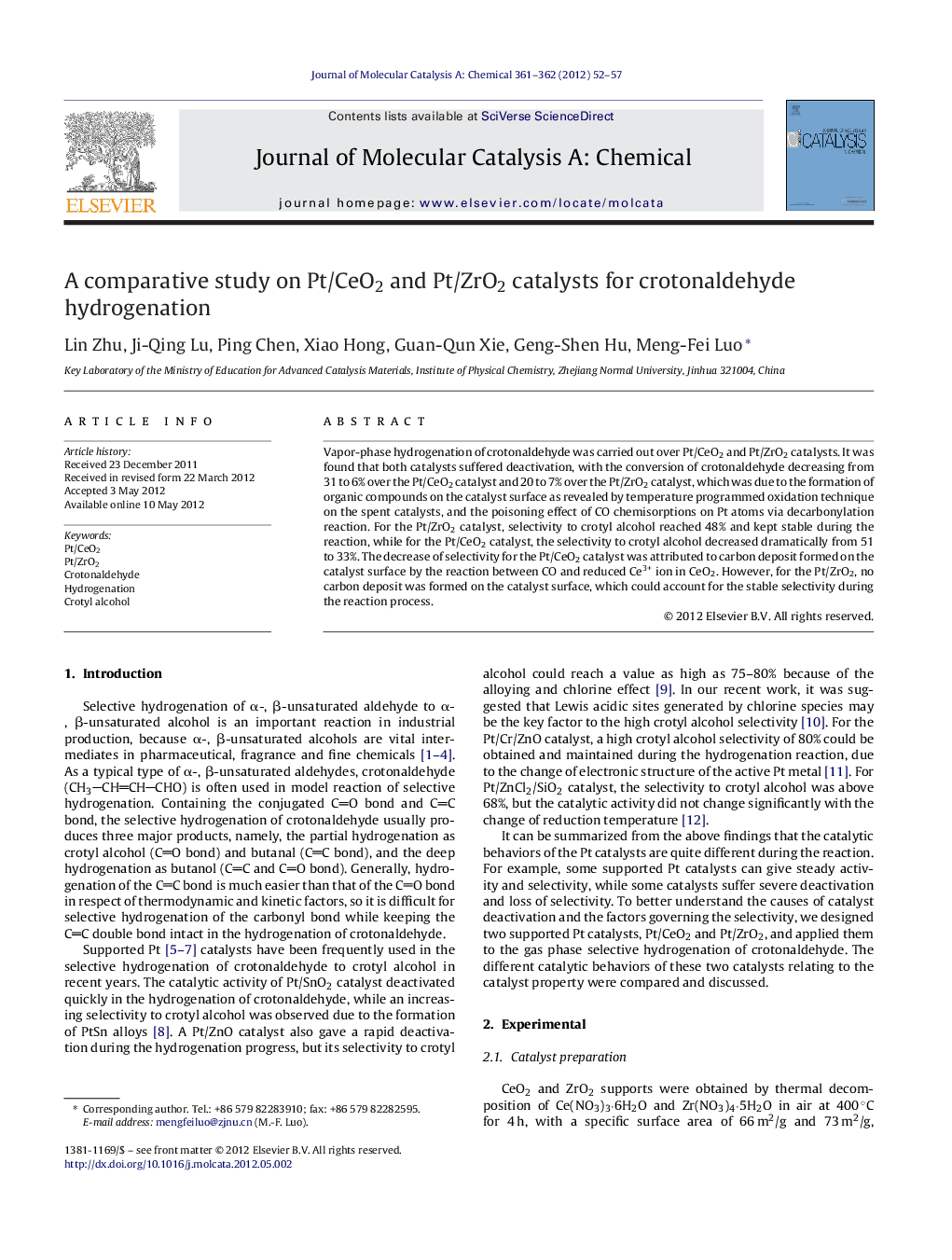| کد مقاله | کد نشریه | سال انتشار | مقاله انگلیسی | نسخه تمام متن |
|---|---|---|---|---|
| 66106 | 48415 | 2012 | 6 صفحه PDF | دانلود رایگان |

Vapor-phase hydrogenation of crotonaldehyde was carried out over Pt/CeO2 and Pt/ZrO2 catalysts. It was found that both catalysts suffered deactivation, with the conversion of crotonaldehyde decreasing from 31 to 6% over the Pt/CeO2 catalyst and 20 to 7% over the Pt/ZrO2 catalyst, which was due to the formation of organic compounds on the catalyst surface as revealed by temperature programmed oxidation technique on the spent catalysts, and the poisoning effect of CO chemisorptions on Pt atoms via decarbonylation reaction. For the Pt/ZrO2 catalyst, selectivity to crotyl alcohol reached 48% and kept stable during the reaction, while for the Pt/CeO2 catalyst, the selectivity to crotyl alcohol decreased dramatically from 51 to 33%. The decrease of selectivity for the Pt/CeO2 catalyst was attributed to carbon deposit formed on the catalyst surface by the reaction between CO and reduced Ce3+ ion in CeO2. However, for the Pt/ZrO2, no carbon deposit was formed on the catalyst surface, which could account for the stable selectivity during the reaction process.
Figure optionsDownload high-quality image (133 K)Download as PowerPoint slideHighlight
► Organic compounds covered active sites and led to catalyst deactivation.
► CO formed via decarbonylation chemisorption on Pt atoms also suppressed activity.
► PtC interfaces on Pt/CeO2 inhibited selectivity to crotyl alcohol.
Journal: Journal of Molecular Catalysis A: Chemical - Volumes 361–362, September 2012, Pages 52–57